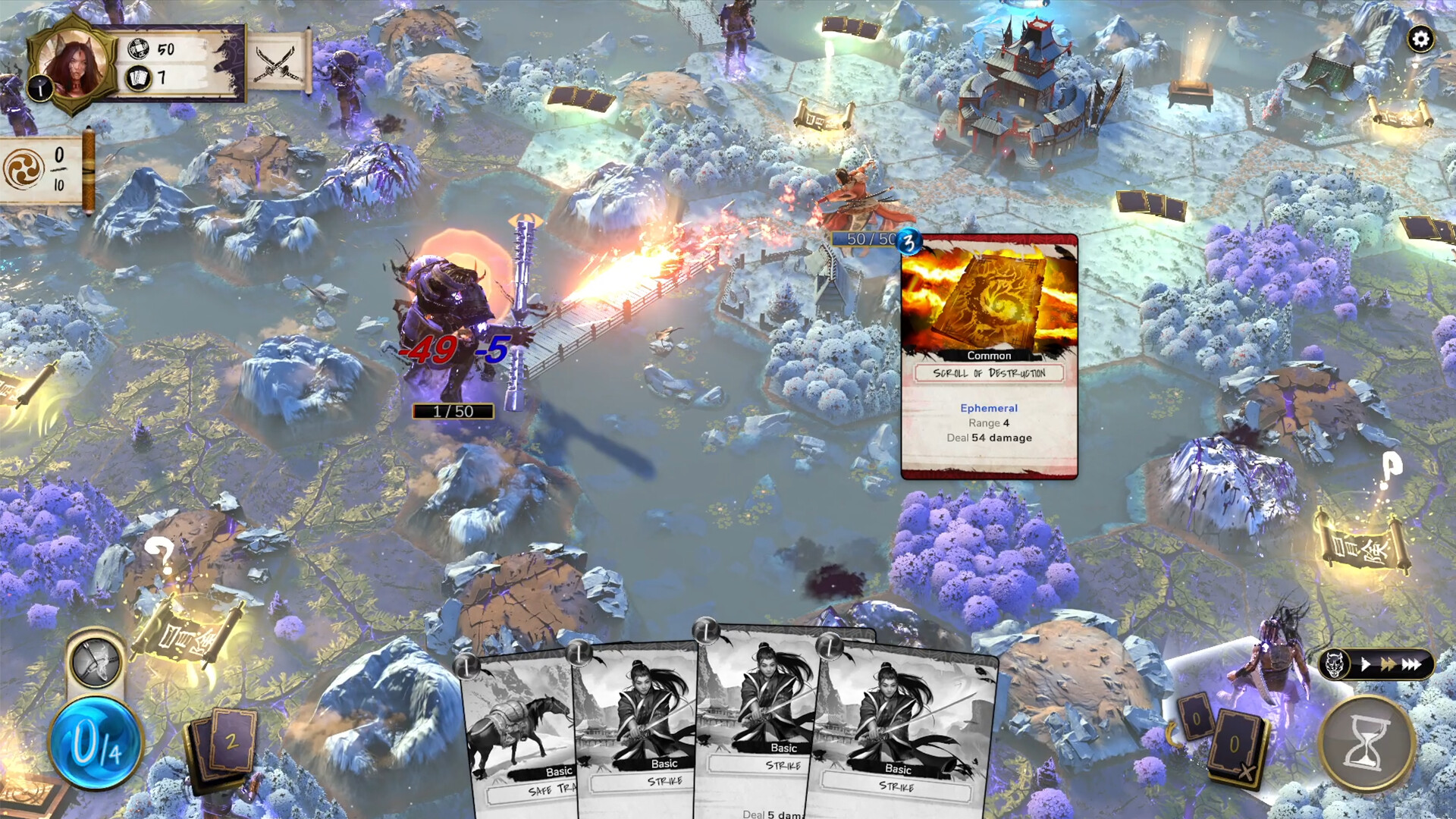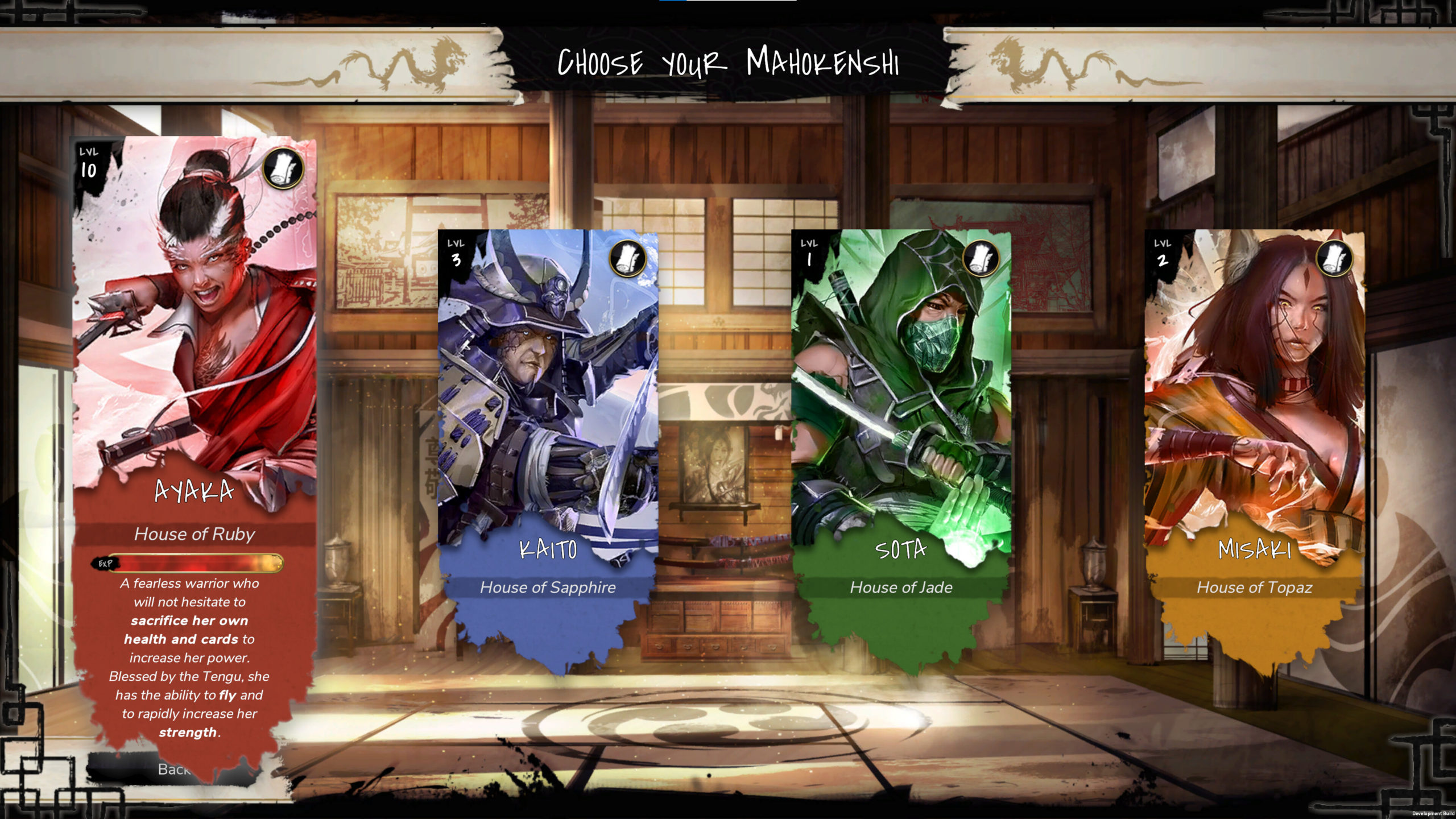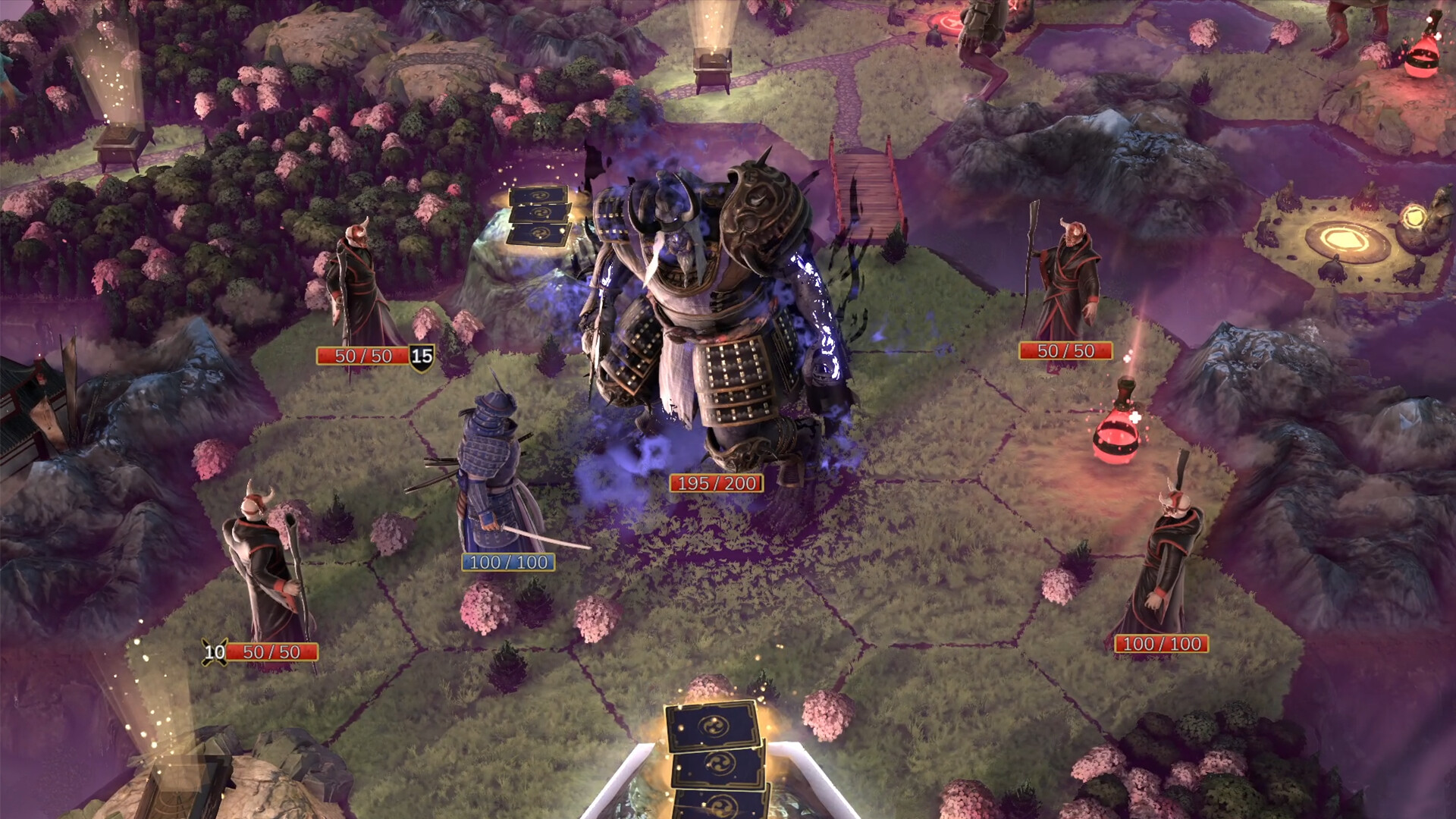
I’ve played a lot of deck builders and card games over the years. Most of them were roguelikes that followed the formula that was seemingly established by Slay the Spire—or at least popularized by it. It’s refreshing, then, when a game takes this popular formula and changes it up to make something new. Mahokenshi went the other way with it: developer Game Source Studio seemingly threw out the formula and decided to make a deck builder their own way.
Mahokenshi is a deckbuilding action adventure game. In it, you play as one of four Mahokenshi, each representing four different houses, and each with their own deck and abilities. Most deckbuilders will have a roguelike setup, normally with two or three branching paths you can choose with different encounters along the way. Mahokenshi, on the other hand, does away with separating the overworld map and battles and integrates both in a way I haven’t seen before.
Each level of Mahokenshi looks a lot like something you’d see in Civilization or the map parts of Total War. When I first started playing, I thought it was a novel way to have your character navigate to the various encounters. Except, there aren’t really encounters as I expected them, since the battles actually take place on the hex grid, too. Not only have I never played a deckbuilder like this before, I started to wonder why this has never been done before. It seems so obvious, and opens up the player to use positioning and actual tactics, almost like a turn-based tactics game. Positioning is important when you go to attack an enemy, since each tile represents a different terrain type, like plains, forests, hills, mountains, towns, castles, etc. Different terrains bestow different advantages. For instance, being in the forest increases your defense, while being on a hill increases your attack.

The different Mahokenshi decks have different strengths and weaknesses, as you would expect from any other deckbuilder. Each of the four different different houses: Topaz, Ruby, Jade, and Sapphire, emphasize different playstyles. For instance, the house of Sapphire features a deck that is about dishing out area damage while being pretty tanky, while the Jade deck is about stealth and poison tactics. Each of these different decks will become more powerful the longer you play them, as new cards are added to the deck as you progress through their levels.

Mahokenshi gives you the opportunity to build up different decks at the start of each mission. The type of deck you can build is dependent on what your goal is, and what cards come up when you get a chance to purchase more at a town, through an event, or by stopping on a card hex. There are the types of events and opportunities you find in other deckbuilders, like areas to cull your deck, and events that can give you a bonus. Additionally, there are also side quests you can take on for added reward and challenge, as well as literal challenges you can attempt to complete in each mission.
Even whether you decide to travel to nearby town or not might have an effect on whether you can win the mission, as you’re usually under some sort of pressure. There are the occasional side mission that allows you to explore at-will, for those who don’t like to be under constant time pressure.
Mahokenshi was a surprise combination of turn-based tactics and deckbuilder I haven’t played before. But what’s more surprising is this formula hasn’t been used before. I have a feeling we’ll see other games use the Mahokenshi formula of strategy meets deckbuilder in the next few years.

A copy of this game was provided to us for the purposes of this review.
